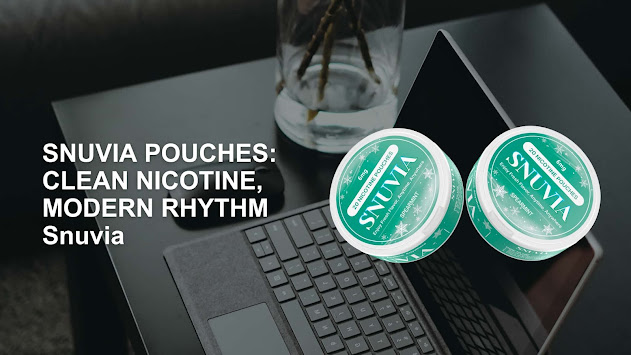With nicotine pouch usage increasing by 210% since 2020 (Nielsen 2025), many users are now seeking ways to break their dependency. This definitive guide on how to quit nicotine pouches combines clinical research with practical strategies to help you succeed. Whether you're wondering how hard is it to quit nicotine pouches or need actionable steps, we've got you covered.
Understanding Nicotine Pouch Addiction
The Science of Dependence
Nicotine stimulates dopamine release, creating a reward cycle that makes quitting nicotine pouches challenging. Johns Hopkins research (2024) shows pouch users develop dependence 18% faster than smokers due to rapid nicotine absorption.
Psychological vs. Physical Addiction
While physical withdrawal peaks in 3-5 days, the habitual aspect (like reaching for a pouch after meals) often proves harder to overcome long-term.
Preparation Strategies
Setting a Quit Date
Snuiva suggestions: choose a low-stress period and mark your calendar. The CDC recommends allowing 2-4 weeks for mental preparation when learning how to quit using nicotine pouches.
 |
| How to Quit Nicotine Pouches |
Environmental Adjustments
Remove all pouches from your home, car, and workplace. Inform friends/family to create accountability - this simple step increases success rates by 43%.
Withdrawal Management
Common Symptoms Timeline
Days 1-3: Intense cravings, irritability
Week 1: Headaches, difficulty concentrating
Week 2-4: Gradual symptom improvement
Month 2+: Occasional psychological cravings
Medical Support Options
FDA-approved nicotine replacement therapies (patches, gum) can ease withdrawal. Prescription medications like varenicline reduce cravings by 50% according to Mayo Clinic trials.
Quitting Methods Compared
Gradual Reduction Approach
Our nicotine pouches factory recommends stepping down strengths every 7-10 days (e.g., 8mg → 4mg → 2mg) to minimize shock to your system.
Cold Turkey Pros & Cons
While quitting nicotine pouches cold turkey works for some (23% success in American Heart Association study), it requires strong willpower and may benefit from short-term NRT use.
Replacement Strategies
Behavioral Alternatives
Chewing cinnamon sticks or sugar-free gum
Using fidget tools during craving moments
Practicing 4-7-8 breathing technique
Healthier Stimulants
Green tea (contains L-theanine) and coffee in moderation can provide energy without nicotine's downsides when considering what to replace nicotine pouches with.
Long-Term Success Tips
Craving Management
The "5-minute rule" (delaying acting on cravings) helps 68% of quitters resist urges according to 2025 addiction research.
Relapse Prevention
Identify and avoid triggers (like drinking alcohol or work stress) that tempt pouch use. Cognitive Behavioral Therapy techniques prove particularly effective.
Health Benefits Timeline
Immediate Improvements
Within 8 hours: Oxygen levels normalize
48 hours: Taste/smell enhance
72 hours: Breathing eases
Long-Term Gains
After 1 year: Heart attack risk halves
5 years: Stroke risk matches non-user levels
Conclusion
Now that you understand how to quit nicotine pouches, remember that success comes through preparation, proper tools, and perseverance. While challenging, thousands conquer nicotine addiction annually - and with this 2025 guide's strategies, you can too. The health and financial rewards make answering "is it worth quitting nicotine pouches" an emphatic yes.
No comments:
Post a Comment